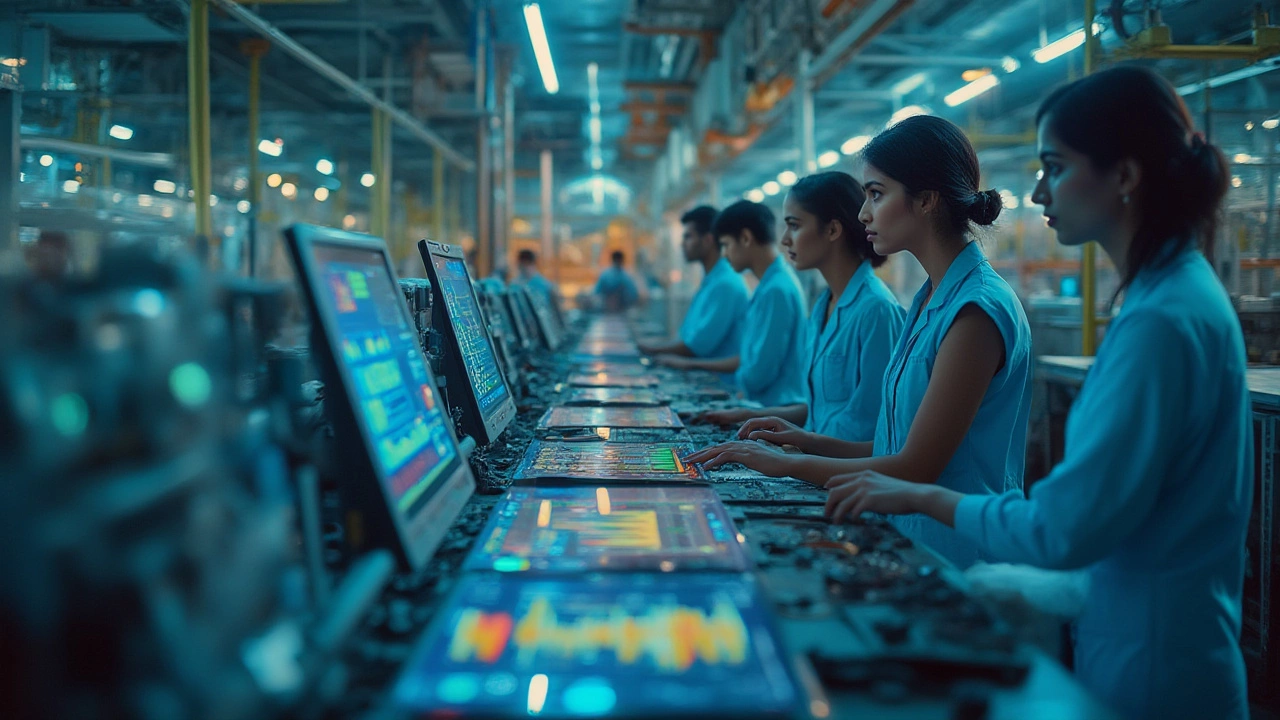Walk onto any modern factory floor and the buzz of digital screens dealing with orders, machines, and people is impossible to miss. Ask a plant manager where to find the real brain behind everything and they’ll probably point to a slew of software acronyms—MES and MOM topping the list. While plenty of people use these names interchangeably, there’s a real difference buried under the jargon. Get these roles mixed up, and you risk slowdowns, mistakes, and headaches you definitely do not want if you’re running production. Let’s break it apart and sort the truth from the tech-speak, so you can be smart about how you build your factory for 2025 and beyond.
Defining MES and MOM: Not Just Alphabet Soup
Plenty of folks in industry circles toss around MES and MOM like they’re twins, but that’s like calling a car’s engine the whole vehicle. Sure, MES—short for Manufacturing Execution System—sits at the heart of production. It’s the software layer that shouts commands to machines, gathers real-time data on what’s actually being made, and tracks materials flying across the floor. If something breaks, MES is the first to know. When a batch needs to be traced because of a defect, MES usually answers the call. Think of it as your factory’s minute-by-minute operations manager, living right between the shop floor and the upper-level business systems (like ERP—the serious spreadsheet stuff that handles planning, finance, and HR).
Now twist the camera back a bit and you get MOM—Manufacturing Operations Management. MOM grew out of the need for factories to get way smarter, not just faster. Rather than just pushing buttons and recording data, MOM is a philosophy, a toolkit, and a technology stack rolled into one. Its job isn’t just to execute orders but to optimize them. MOM handles everything from tracking recipes in a yogurt plant, to ensuring regulatory compliance in a pharma factory, and keeping maintenance on schedule in an auto assembly line. A MOM platform will often include modules for MES, plus extra capabilities like quality management, advanced analytics, scheduling, performance monitoring, and even lab management. MES is about making sure things get made correctly, while MOM is about making sure everything—the people, the process, the product—keeps getting better every day.
Let’s put some numbers behind that. A 2023 report from Gartner estimated that more than 60% of large-scale manufacturers in Europe were investing in both MOM and MES, but found that those seeing the biggest operational benefits were combining both, not relying on just MES alone. There’s another reason the difference matters: if you buy a basic MES and expect it to run your maintenance, quality, and scheduling like a MOM does, you’ll land in meetings where people wonder why you’re missing reports, inspections, and compliance deadlines. That’s not a fun place to be.
Here’s the real clincher: MOM is a superset that usually includes MES, sometimes you can buy them together, sometimes as two different solutions. When companies talk about ‘digital transformation’—turning dusty assembly lines into smart factories—they’re almost always chasing MOM-level goals, not just MES functionality.

Real World Examples: MES at Work, MOM in Action
Suppose you walk through the door at Jaguar Land Rover here in the Midlands. The MES is busy directing robotic arms that weld and assemble bodies, logging every single VIN and serial number as parts roll down the line. If there’s a hiccup—say a sensor finds a faulty bolt—the MES can hit pause, divert the product, and automatically summon a technician. The MES logs how long everything takes, collects downtime data, and keeps everyone in sync. MES is excellent for immediate production visibility. It tells you exactly where your products are, who worked on them, and whether anything needs fixing right this instant.
Beneath that, MOM goes big picture. It crunches all the MES data from multiple lines, flags when a machine is close to running out of oil, schedules preventive repairs, and reroutes orders if a critical piece of equipment goes down. If a new emissions regulation lands from Brussels, the MOM system updates procedures and checks that every shift logs compliance correctly. MOM can send real-time updates to the boss, show analytics dashboards that reveal which shift produces with fewer mistakes, and even help HR figure out who needs more training. While MES focuses on performance in the moment, MOM keeps an eye on everything that could go wrong a week later—or save you money in six months.
Food processors use this to their advantage when dealing with strict shelf-life laws. MES might be responsible for making sure every tub of butter is filled, labeled, and recorded as it passes along the conveyor. MOM, on the other hand, flags when use-by dates aren’t printed clearly, checks if sanitation was correctly performed on each run, and alerts the site manager if a supplier batch needs verification. This is how recalls are prevented, fines dodged, and shelves kept stocked without embarrassing blunders.
Pharmaceutical companies live and die by their documentation. If the law says you need to show every step of tablet-making from raw chemical to final pill, MES ensures nothing is missed. But when auditors arrive asking for ten months’ worth of quality samples, supplier sign-offs, and batch deviations, MOM is what spits out the reports, spots trends, and shows where improvements can be made for the next big drug run. It’s the difference between just staying in business and actually getting ahead.
One tip from the trenches: factories who only implement MES first tend to circle back a few years later to layer on MOM functions. If you’re shopping for software in a growing factory, ask vendors whether their system can grow with you and handle MOM tasks in the future. Future-proofing is a buzzword, but when you see how quickly regulations, technologies, and customer demands change, you realize it’s just common sense.

Tips, Pitfalls, and Choosing What Fits
If you’re sitting on the technology fence, here’s something the glossy brochures rarely say: MES is usually the right starting point, but don’t stop there. MOM is what takes a basic, digitized factory and turns it into a nimble, responsive operation that can dodge crises and seize new opportunities. Manufacturers that outpace their competition usually invest in both. MES comes first because you need a rock-solid foundation to track who did what, when. Then, as you crave efficiency and face growing demands—shorter lead times, more product variants, zero tolerance for waste—MOM helps you stay ahead.
One snag? There’s often confusion on the sales side. Some vendors label their product as MOM but really only offer strong MES features. Others oversell and promise MOM-level capability, but can’t truly handle tasks like advanced analytics or lab management. It pays to get a list of your site’s actual pain points and cross-reference them with software demos. If you’re in automotive or pharma, regulatory compliance and traceability should be built-in, not optional add-ons. Food and beverage? Focus on quality checks, supplier verification, and sanitation scheduling.
Don’t forget about integration, either. Whatever you buy needs to talk to existing ERP, supply chain, and sometimes even HR systems (if you want to optimize shift schedules or monitor certifications). The best solutions use standard interfaces and offer APIs so you’re not locked into a single vendor when your business grows. Modular solutions cost a little more upfront but save a fortune when you want to bolt on features later.
A quick word on culture: MES rolls out easily when top leadership supports it, but MOM tends to disrupt old habits and force new ones. You’ll need champions—people who understand not just the software, but also how manufacturing works on the ground. A great implementation always starts small and shows real wins before spreading across every department. That keeps buy-in high and pushback low, even from the most grizzled machine operators.
Industry stats back this up. The World Economic Forum in 2022 found that companies globally who combined MES and MOM improved production efficiency on average by 16% within two years, compared to only 9% for those sticking with MES alone. Don’t just digitize—optimize. The secret sauce to happiest, most reliable factories? They listen to their data, empower their teams with easy-to-use tools, and never stop tweaking processes.
If you’re looking for one phrase to remember, try this: MES keeps your factory running; MOM helps it run better, smarter, and more profitably. So next time some well-meaning consultant tries to sell you the ‘latest’ MES, ask them what MOM capability comes bundled in. Factories aren’t getting any simpler—and anyone pretending otherwise hasn’t spent much time on a modern shop floor in 2025.






